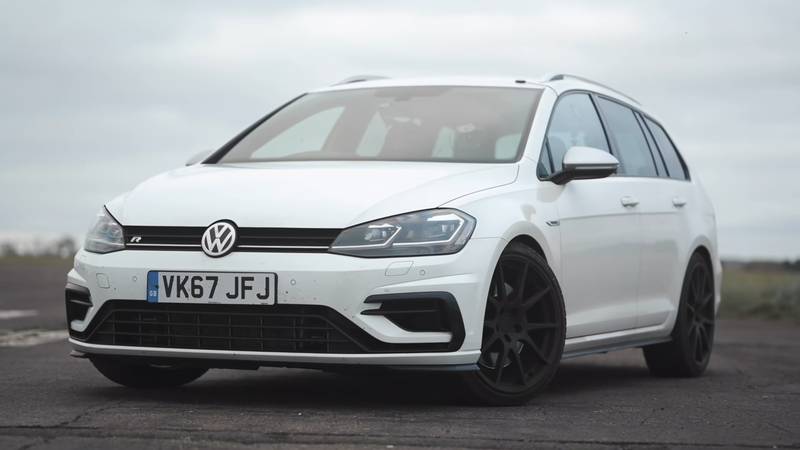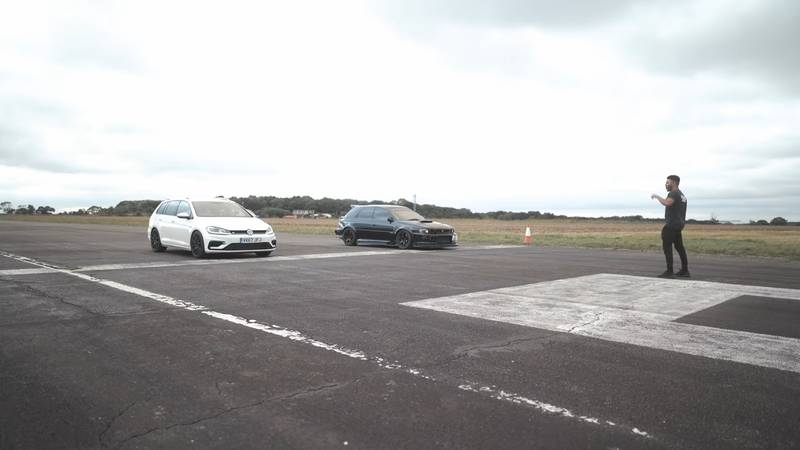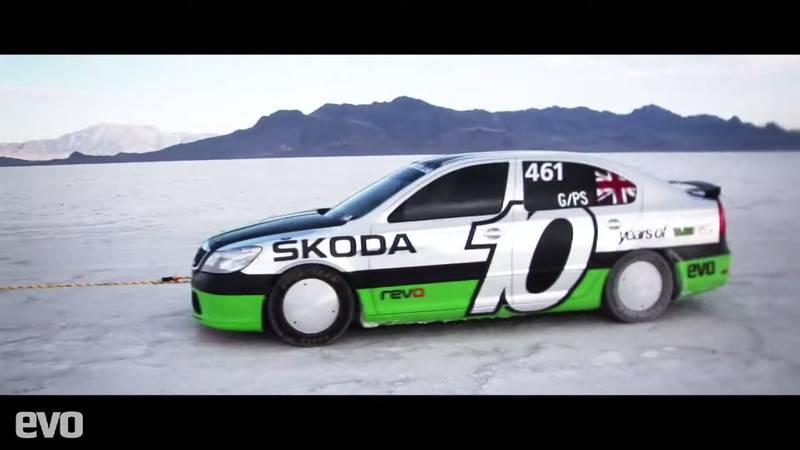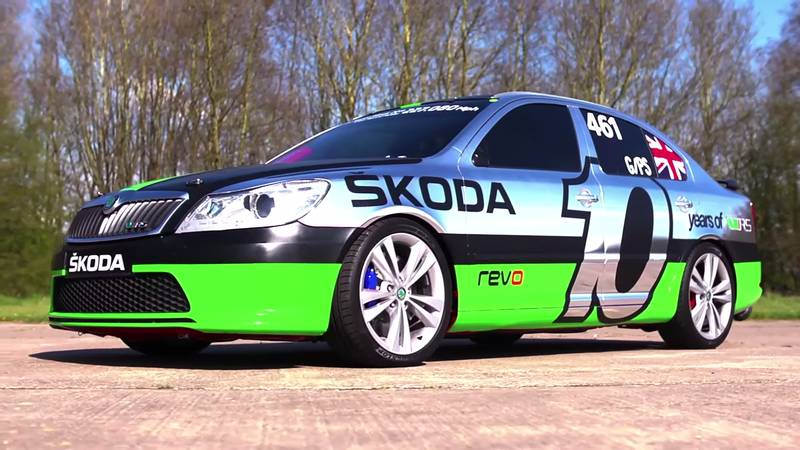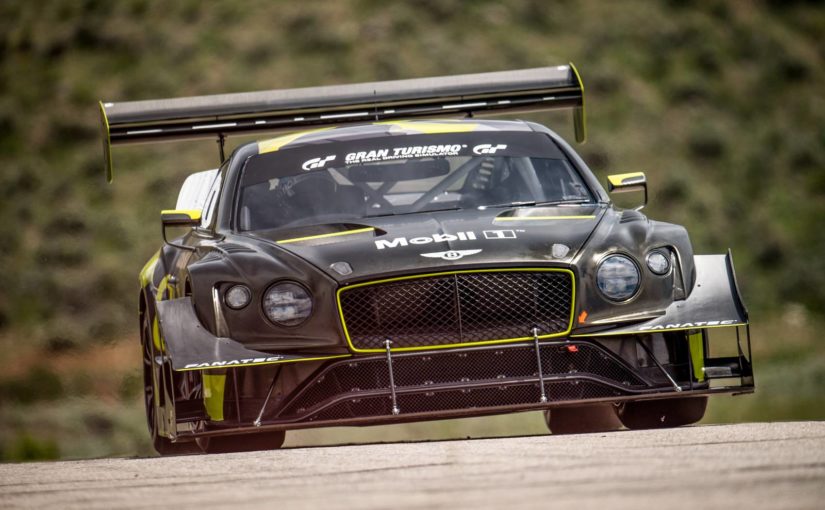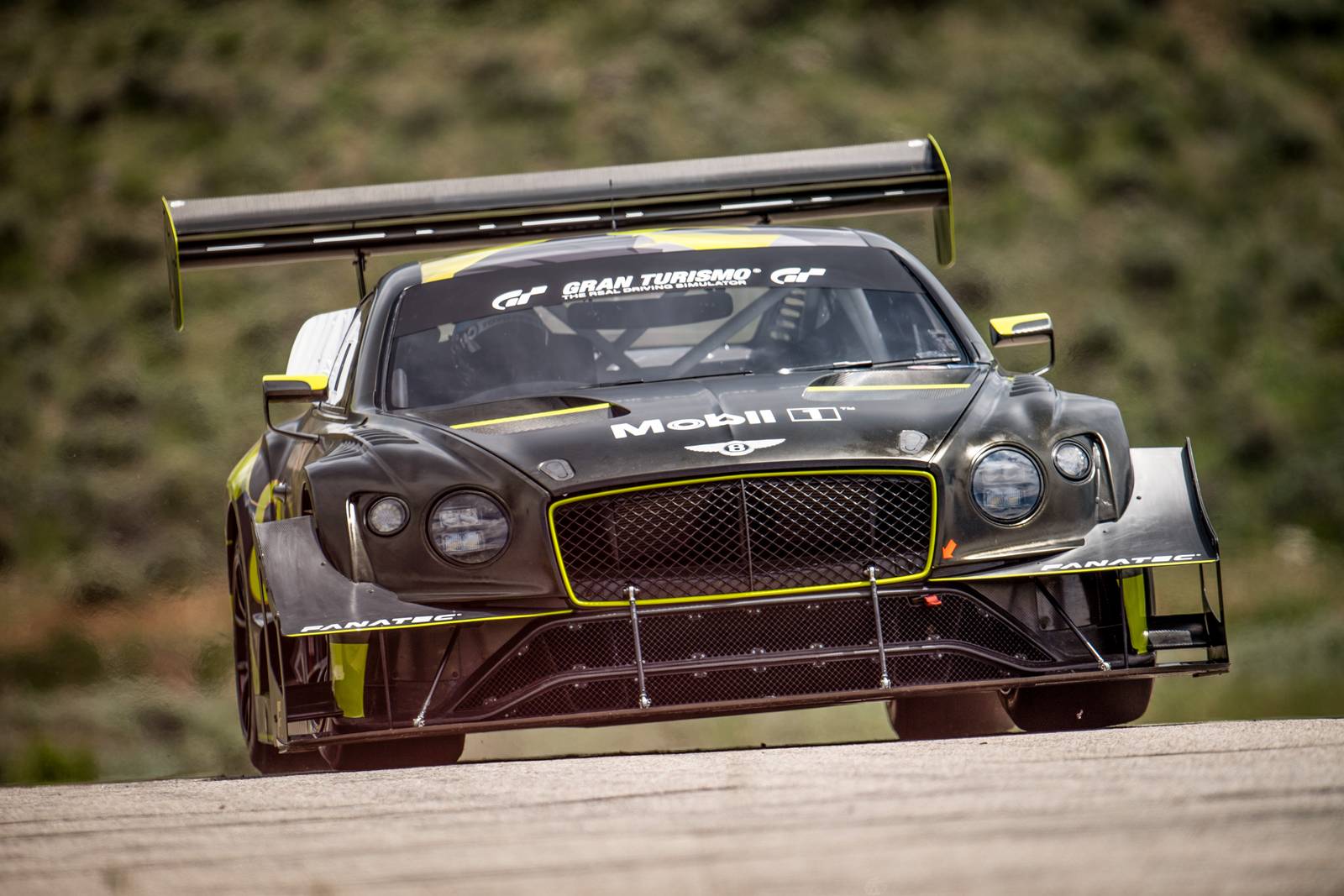What Brings The Heat To The Race?
The Subaru WRX STI wagon is tuned by Racedynamix. It features a 2.0-liter, EJ207 STI engine that makes 500 horses. The mods on this build include an SC46 turbo, a five-speed Pfitzner Performance gearbox that powers all four wheels, and a Syvecs S6 ECU with anti-lag, launch control, flat-foot shifting, and rolling launch. It rides on semi-slick tires on all four corners.
The Volkswagen Golf R Estate is powered by a 2.0-liter, four-cylinder turbocharged engine. Power is sent to all four wheels via a seven-speed dual-clutch automatic gearbox. The mods on it include a Venom 500 turbo, an Autotech high-pressure fuel pump, a Revo low-pressure fuel pump, and a Wagner intercooler. It is riding on Michelin PS4S tires.
The Subaru weighs 1,150 kilos (2,535 pounds), giving it a power-to-weight ratio of 434 BHP/ton. The Volkswagen has a stripped interior, but still weighs 1,500 kilos (3,307 pounds) – significantly more than the Scooby. This gives it a power-to-weight ratio of 333 BHP/ton.
0-60 mph
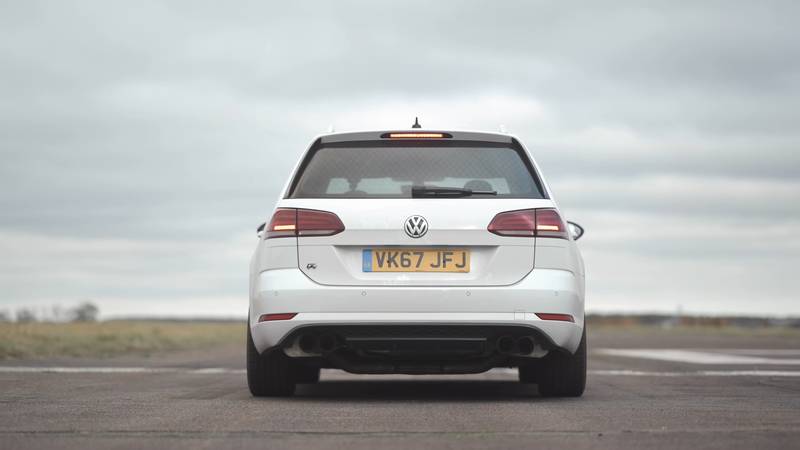
0-60 mph: Winner – Volkswagen
The Subaru took just 3.168 seconds to touch the mark, but the VW was even quicker. It sprinted from 0 to 60 mph in 2.974 seconds
The first round was the 0-60 mph individual test. Here, the Subaru took just 3.168 seconds to touch the mark. The Volkswagen, on the other hand, was quicker. It took just 2.974 seconds to touch 60 mph from a standstill. Well, thank the dual-clutch auto gearbox and the all-wheel-drive system.
Winner: Volkswagen Golf R Estate
Quarter-Mile Run

Quarter-Mile Run: Winner – Subaru
The Scooby ran the distance in 11.382 seconds at 125.66 mph. The German was almost as quick, taking 11.507 seconds at 122.49 mph to complete the distance
The Scooby went first and ran the quarter-mile in 11.382 seconds with a trap speed of 125.66 mph. The Volkswagen Golf R Estate was a tad bit slow, but still fairly impressive. It took 11.507 seconds at 122.49 mph to complete the quarter-mile distance.
Winner: Subaru WRX STI
Quarter-Mile Races
Seeing how closely matched both the wagons were in their respective quarter-mile runs, the race was going to be exciting. The Subaru was quicker off the line in the first race and managed to keep the lead till the very end. It looked like it would be a mighty close race, perhaps one of the cars beating the other by the nose, but it wasn’t. The WRX STI wagon beat it by at least three car lengths.
Winner: Subaru WRX STI
The driver of the Golf R Estate, Yuri, wanted to give it another shot. So, they raced again to see if the German wagon would get a better and smoother start off the line. As it turns out, it did! The Golf R Estate sped off the line, leaving the WRX STI in the dust. The latter was able to get quite close by the end, but not enough to win. With the way the Subaru was going, the result could’ve been different had this been a half-mile race. But, the Japanese hit a snag and that could’ve been the reason for the result.
Winner: Volkswagen Golf R Estate

The next two races belonged to the VW. In one of these, the Subaru hit a hurdle, but the next one was as close as it could get, which the German eventually won again
After fixing it up, they raced for the third time, and this was the closest race of them all. The wagons were neck-and-neck halfway, but then the Volkswagen edged slightly forward. In the end, it won by barely a car length.
Winner: Volkswagen Golf R Estate
Roll Race
The rolling race was up next. The Subaru had a better kickdown here and got the lead as soon as they touched the starting line. The Volkswagen couldn’t catch it and eventually lost the race. There was just one roll race, and it belonged to the WRX STI wagon.
Winner: Subaru WRX STI
Watch this epic race below and share your thoughts with us in the comments section.

